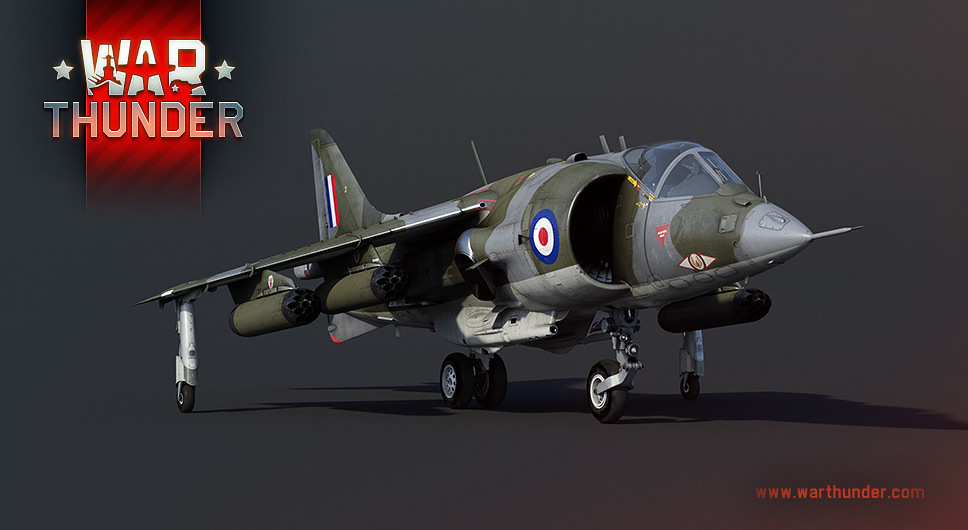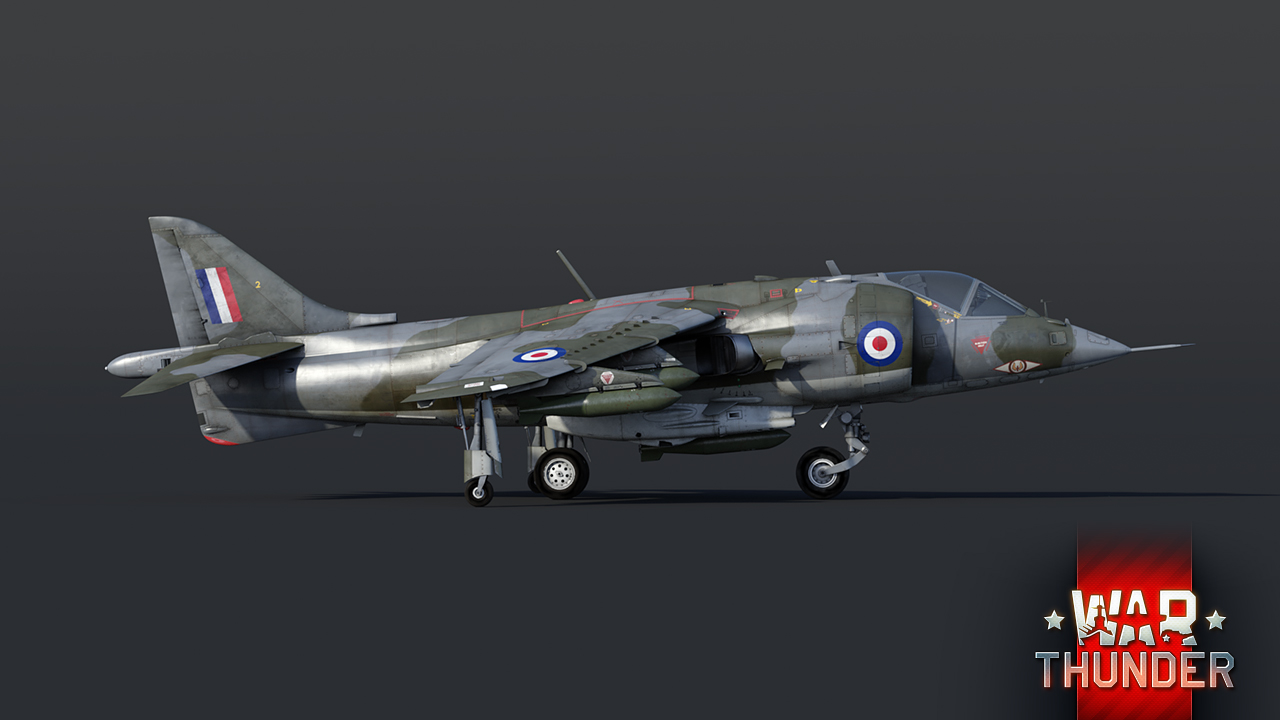 The Hawker Siddeley Harrier was the world’s first operationally successful ground attack aircraft with vertical/short takeoff and landing (V/STOL) capabilities. Developed during the 1960’s, several variants of the Harrier are now on course to also become the first V/STOL aircraft available to pilots in War Thunder as they arrive in the game as part of the ‘New Power’ update!Harrier, jet fighter, Great Britain/USA, V/VI rank.
The Hawker Siddeley Harrier was the world’s first operationally successful ground attack aircraft with vertical/short takeoff and landing (V/STOL) capabilities. Developed during the 1960’s, several variants of the Harrier are now on course to also become the first V/STOL aircraft available to pilots in War Thunder as they arrive in the game as part of the ‘New Power’ update!Harrier, jet fighter, Great Britain/USA, V/VI rank.➕ VTOL capabilities
➕ ersatile secondary weapons
➕ Premium bonuses (on AV-8A & Harrier GR.1)
➖ Subsonic
➖ Limited ordnance compared to conventional strike aircraft
In War Thunder, the Harrier will become the first V/STOL aircraft to arrive in the game and by doing so, pilots will have the chance to experience the aircraft in not just one, but up to four variants - including two premium modifications! Being a novel aircraft type in the game, the Harrier successfully combines the key characteristic features of both fixed wing aircraft as well as helicopters, meaning aspiring pilots will first need to get to grips with some of the new mechanics arriving in the game with the introduction of the Harrier. So let’s get you briefed!

Unlike all other aircraft in the game, the Harrier features a distinct thrust vectoring propulsion system - a feature that immediately becomes apparent when pilots spot the two thrust nozzles on either side of the airframe. These thrust nozzles can be rotated from 0 - 98° manually by pilots, and with enough thrust applied, the aircraft will either take off normally or vertically, depending on the angle set to the thrust nozzles. In flight, pilots can vary the nozzles’ angle to alter the flight characteristics of the aircraft - for example to perform tighter turns - but this skill will naturally require some practice before mastering it! Additionally, pilots will also be able to enter hover mode with the press of a button - similar to helicopters - thus enabling them to perform helicopter-style attack runs or avoid enemy detection at low altitude.

Now that pilots have a rough understanding of how the Harrier works, let’s get into some detail about the aircraft itself, shall we? The beating heart behind the thrust vectoring system described earlier is the Rolls-Royce/Bristol Pegasus turbofan jet engine nestled deep inside the airframe. Depending on the version of the engine, it can generate from 19,000 - 21,500 lbf (8618 - 9752 kgf) of thrust, thus allowing the aircraft to reach speeds between 683 - 745 mph (1,100 - 1,200 kph), depending on the modification of the aircraft. At any rate, the Harrier is unable to attain supersonic speeds under normal circumstances, especially when loaded with ordnance. However, pilots can push the aircraft to its limits and break the sound barrier in a dive, assuming they don’t break the aircraft beforehand.
Having touched on the subject of Harrier variants, here’s a brief overview of the modifications arriving in War Thunder with the ‘New Power’ update;
Harrier GR.1
(Great Britain, V rank, GE premium)
The first production variant of the Harrier to enter service with the RAF.
Harrier GR.3
(Great Britain, VI rank)
The upgraded RAF Harrier, featuring a more powerful Pegasus 11 engine.
AV-8A Harrier
(USA, V rank, premium, Store pack)
The first Harrier modification to enter service with the USMC. Equipped with the same engine found on the GR.3.
AV-8C Harrier
(USA, VI rank)
A later modification of the US Harrier, created by upgrading the AV-8A.
All modifications of the Harrier come fitted with a pair of 30mm ADEN cannons as standard, comprising their primary armament. However, their arsenal can be further augmented through the installation of air-to-air missiles, bombs as well as unguided rockets. This means that pilots can ideally outfit their Harrier for the task at hand, whether it be ground attack or combat air patrol missions. However, it should be noted that the Harrier doesn’t shine in either of those two roles exclusively, but rather demonstrates its full potential in a combination of the two.

The Harrier’s payload is rather limited compared to some other attack aircraft in the game, but it’s enough to deliver a precision strike in order to halt an enemy advance. After delivering its payload, the Harrier’s excellent flight characteristics and VTOL abilities allow it to loiter in the mission area, potentially undetected at low altitude, picking off any unwanted aerial intruders as they enter its airspace!
Aspiring owners of the premium modifications of the Harrier may obtain the American AV-8A version as part of a special bundle in our online store, or the British Harrier GR.1 in the game for Golden Eagles. Possessing similar performance characteristics as the regular versions, the Harrier GR.1 and AV-8A primarily offer pilots additional rewards for all actions performed in combat as well as giving particularly eager pilots instant access to the aircraft, without needing to research it first.



